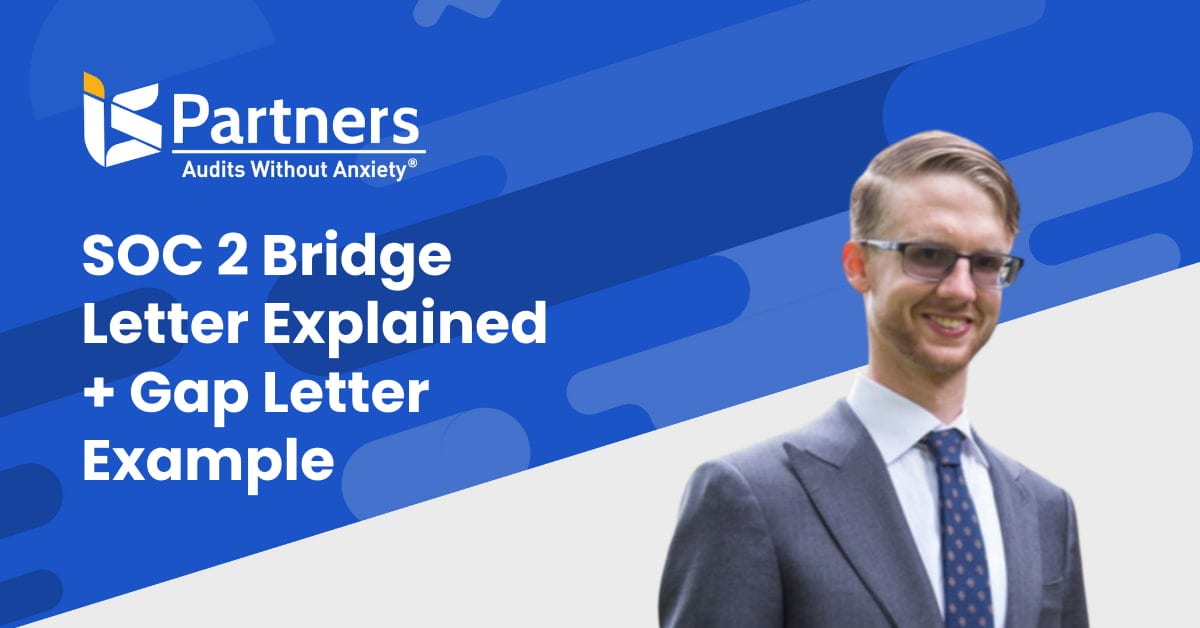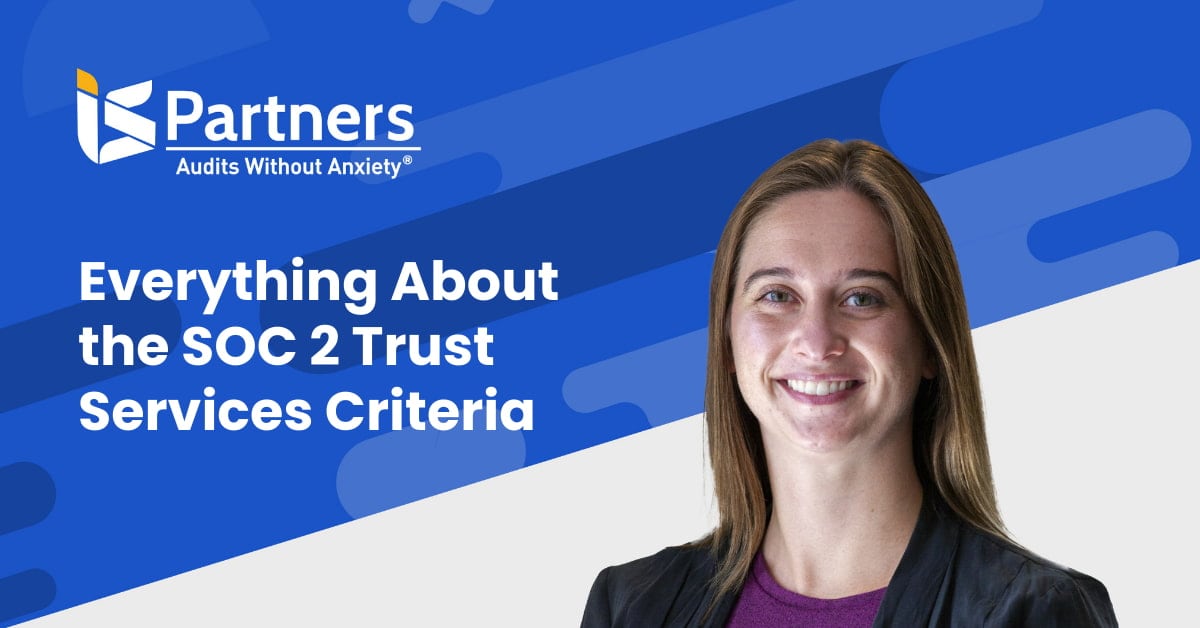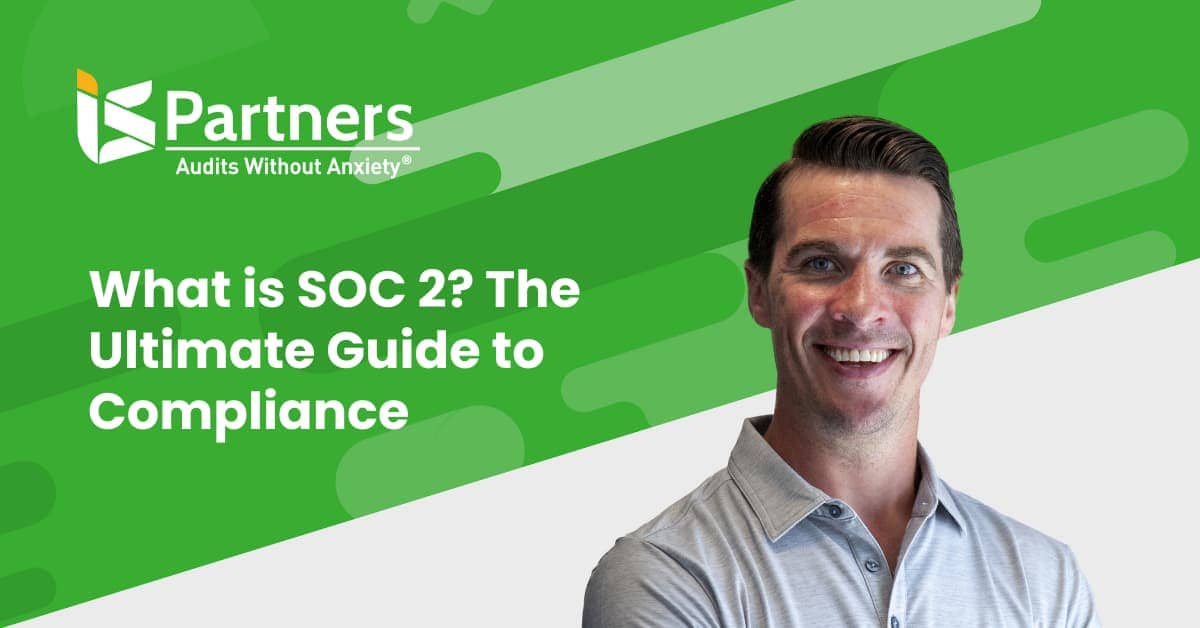Intro to SOC 2 Risk Assessments
Understanding and managing risks are pivotal aspects of any organization’s security posture. Through SOC 2 Risk Assessment, organizations can identify and evaluate risks related to their information systems, ensuring their data’s confidentiality, integrity, and availability. In this guide, we’ll delve into SOC 2 Risk Assessment and Risk Management, clarifying these processes’ significance, benefits, and how they can be effectively implemented for robust cybersecurity.
Key Takeaways
2. There are several important stages in a SOC 2 Risk Assessment. They involve identifying potential risks, comprehensive security assessments, creating a risk mitigation plan, deploying it across the organization, and maintaining SOC 2 compliant controls.
3. I.S. Partners provides customized SOC 2 risk assessment services that cater to unique business goals and compliance needs. Their expert services help organizations identify vital systems, thoroughly assess risk, document risk responses, and persistently uphold risk management processes.
Gaining Deeper Insights: The Role of SOC in Risk Assessments
When it comes to cybersecurity assessments, the SOC 2 risk assessment reigns supreme. It serves as a critical step towards security compliance, allowing an organization to scrutinize systems in place, identify vendor and fraud risks, and achieve control of the impact. A SOC 2 risk assessment provides insights into managing these risks, playing a pivotal role in risk assessments underpinned by crucial security requirements.
A robust SOC 2 process requires commitment from the management team and every other team member across the organization. Rigorous risk analysis on data integrity, availability, and security issues become the principle behind such controls, protecting against cyber threats, loss from fraud, accounting discrepancies, etc.
The SOC 2 audit is a thorough compliance review, ensuring controls comply with the set standards. The SOC 2 risk assessment is part of a SOC 2 readiness assessment and is crucial for information security within an organization and significant for maintaining confidence in the organization’s commitment to assessing, mitigating, and managing risk.
Understanding the Security Impact and Management of SOC
The essential step of SOC 2 security compliance is understanding the security impact and contributing to risk management within an organization. SOC 2 directly equips systems with cyber controls that mitigate the risk of fraud, data loss, and cyber threats. A well-conducted risk assessment delves into all areas of an organization’s systems to identify any potential vulnerabilities. Furthermore, the risk management aspect of SOC 2 ensures that these vulnerabilities are effectively addressed, promoting a resilient cybersecurity environment.
Audits form part of the SOC 2 risk assessment and highlight areas where security compliance may be lacking. This vital information guides the management team in implementing necessary controls for securing the organization’s data.
At I.S. Partners, our cybersecurity experts are pivotal in ensuring SOC 2 compliance by conducting robust risk assessments and establishing efficient risk management processes. Our services help organizations achieve SOC 2 compliance and empower their cybersecurity defense mechanisms against potential cyber threats.
SOC Risk Assessment in 5 Steps
Understanding SOC 2 Risk Assessment in five critical steps is essential for an organization’s risk management plan. The initial step in the SOC 2 risk assessment process requires identifying potential risks that could lead to data breaches or fraud.
1. Determine Your Business Goals
Establishing your business goals is a crucial step in the SOC 2 risk assessment process. Understanding and communicating your business objectives ensures that your risk management efforts align with your enterprise’s priorities and future direction. An effective audit process begins with identifying what those business goals are.
An essential component of the audit process is evaluating how these objectives influence the decision-making within your organization. This is especially paramount when accounting for risks inherent to handling sensitive information. The I.S. Partners team supports enterprises in uncovering the potential risks associated with achieving their business targets.
The process also involves identifying the role of your team in risk management. A team’s involvement is critical as it enables the team to understand the business objectives and possible threats comprehensively. Digging deeper into these roles aids the successful implementation of SOC 2 controls. This process ensures that the overall security of your business information is not compromised while pursuing strategic goals.
2. Identify Essential Systems
When managing SOC 2 risk assessment, it’s crucial to identify essential systems that support your business goals. These systems often include hardware, software, networks, and other technological parts vital to your operations.
We, at I.S. Partners, closely assess these systems for risk levels and their associated controls. Why? Because a clear understanding of your systems is necessary in determining where your company might have vulnerabilities or if your current controls are robust enough to manage potential attacks.
This is equally critical when you’re dealing with an audit. Identifying and protecting essential systems from risk helps ensure a smooth audit process and strengthens your overall security framework.
A thorough audit reveals areas where your existing control measures need adjustment for optimal system performance. Remember, system control is not a one-time task but a continuous effort to ensure your organization’s security systems are robust, efficient, and adaptive to ever-evolving cyber threats.
3. Conduct a Risk Analysis
As part of the SOC 2 risk assessment process, conducting an extensive risk analysis is paramount. At I.S. Partners, we believe in this step’s value because effective analysis helps identify potential risks that may affect your essential systems. Conducting a thorough risk analysis often requires specific skills to assess, evaluate, and manage the risks appropriately.
During the risk analysis, essential details like the nature of the risk, its impact on your business goals, and the mitigation strategies ideal for each identified risk are typically examined. An audit can provide a state-of-the-art framework for this analysis. The audit is not just a one-off event but a continuous process to assess and manage risks proactively.
Audit results offer insights into the areas that need improvement. They also help evaluate the effectiveness of risk management strategies. Therefore, risk analysis, powered by a thorough audit, should play a vital role in your overall SOC 2 Risk Assessment strategy.
4. Document Risk Responses
In cybersecurity, documenting risk responses is critical to SOC 2 risk assessments and a fundamental part of achieving security compliance. At I.S. Partners, after conducting a risk analysis and identifying any vulnerabilities within your essential systems, we then proceed to document the risk responses. This entails planning how to deal with each potential threat and documenting it in a comprehensive report.
This process aims to identify and implement effective controls that minimize identified risks to a tolerable level as deemed by your organization’s management and stakeholder’s risk appetite.
The comprehensive report ensures clear communication of responsibilities and actions, contributing to effective risk management. This documentation will later form an integral part of the audit process, as it helps external auditors assess the effectiveness of security controls in meeting your business goals. Proper documentation of risk responses is vital for information assurance, helping establish a robust framework for managing and mitigating future threats.
5. Maintain Consistency
Consistent maintenance is the fifth and final step in this SOC 2 risk assessment process. It is critical to continually assess and manage risks that may alter your system requirements and affect compliance. Consistency requires dedication to regular audits, monitoring of processes, and regular review of policies.
This keeps the controls relevant and effective amidst the ever-evolving panorama of informational risks. The level of risk and nature of the systems in question should determine audit frequency. Less apparent but equally important, feedback from these audits must be integrated into processes to ensure the program’s effectiveness. More so, engaging in regular audits aids in the early detection and appropriately handling of potential risk factors.
A consistent risk assessment process with an effective risk management system will improve your organization’s resilience to threats and enhance compliance with SOC 2 requirements. This is what effective pre-emptive security looks like delivered by I.S. Partners.
Deciding Between SOC 1 or SOC 2: What’s Best for Your Company’s Risk Management?
Deciding between SOC 1 or SOC 2 is an important step in your company’s risk management plan. Your chosen path significantly impacts your organization’s overall audit compliance and data security. The decision between SOC 1 and SOC 2 largely depends on your company’s specific needs and objectives. SOC 1 audits, for instance, generally revolve around controls related to financial reporting, making them a good fit for organizations where this is a priority.
On the other hand, SOC 2 audits focus on managing data security, privacy, and availability – key considerations for companies operating in data-sensitive industries. Furthermore, effective SOC 2 compliance requires ongoing evaluation and management of vendors to ensure they’re meeting adequate security controls.
Ultimately, whether your organization chooses SOC 1 or SOC 2 will be dictated by your company’s unique circumstances, such as industry requirements, customer expectations, and the level of risk assessed in your company’s SOC risk assessment processes. Always strive to maintain consistency in your risk management approach.
How the Risk Assessment Process Assesses Vendor Risks?
The risk assessment process plays a crucial role in charting the course of an organization’s security stance, particularly regarding how such processes assess vendor risks. A well-executed risk assessment process can help paint a comprehensive picture of potential third-party risk, allowing for more responsive and effective vendor management. The assessment acts as a yardstick, measuring vendor risks and identifying any that could potentially threaten the organization.
Vendors play a pivotal role in the everyday running of an organization, making them an integral part of risk assessments. Evaluating vendors and their associated risks shouldn’t be a one-time process. Instead, it must be a continuous process, with regular assessments and reassessments. This helps track any change in risk or possible new risks due to changes within the vendor’s landscape.
Notably, understanding how risks tied to vendors can be appropriately managed is a critical part of the risk assessment process, and it is here that I.S. Partners’ expertise comes in handy, providing holistic risk management solutions tailor-made for your unique business needs.
SOC 2 Risk Assessment with I.S. Partners
As the complexities of business processes rise, organizations need to prioritize risk management to protect against threats and maintain compliance. There’s no one-size-fits-all approach. Each company is unique in terms of operational, governance, and regulatory obligations, thus necessitating tailoring risk management to satisfy your organization’s needs. At I.S. Partners, we offer expert advice to help design risk management strategies that fit your company’s context well.
Our team is adept at conducting a thorough risk analysis and documenting risk responses, ensuring a comprehensive SOC 2-compliant control system. We believe rigorous vendor management is vital to the SOC 2 risk management process. Whether you need SOC 2 or SOC 1, our team can customize a solution for your company’s risk management needs. Get a quote or book a free consultation today.
FAQs about SOC Risk Assessment
SOC 1®, SOC 2® and SOC 3® are registered trademarks of the AICPA (American Institute of Certified Public Accountants). The AICPA® Trust Services Criteria for Security, Availability, Processing Integrity, Confidentiality, and Privacy is copyrighted by the Association of International Certified Professional Accountants. All rights reserved.




